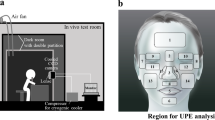Abstract
Intravital microscopy is widely used to study the microcirculation. However, the use of fluorescent dyes can induce phototoxic effects which may affect the measurements, particularly in tissue exposed to oxidative stress. The aim of the study was to determine the threshold light dose at which fluorescent microscopy is associated with phototoxic effects in the hamster dorsal skinfold chamber under normal and pathological conditions. The extent of phototoxicity in the microcirculation in the hamster skinfold chamber was investigated using intravital fluorescent microscopy during 60 min of illumination (1048 mW/cm2) applying two different concentrations of fluorescein isothiocyanate dextran under baseline conditions (groups A and B) and following 4 h of ischemia (groups C and D). In the second part of the study the microvasculature was analyzed regarding phototoxic effects during a standardized intravital microscopic examination after 4 h of pressure induced ischemia. Groups I and II (n=7) were studied using epiillumination after injection of fluorescein isothiocyanate dextran plus rhodamine 6G or rhodamine 6G only. In group III (n=7) only transillumination was used. Arteriolar vasospasm, microvascular perfusion failure, thrombus formation, and enhanced leukocyte endothelium interaction were observed as signs of a phototoxic effect in normal tissue. However, the light doses needed to induce these effects clearly exceeded those during standard examinations. The induction of a 4-h ischemia and reperfusion further enhanced these effects. Despite the predamage by ischemia/reperfusion the comparison of epiillumination and transillumination microscopy using a standard protocol showed no differences regarding the parameters analyzed at any time. This indicates that epiillumination and the fluorescent dyes per se did not affect the experimental results. These results show that ischemia/reperfusion studies in the dorsal skinfold chamber of the Syrian golden hamster can be carried out safely without the risk of inducing phototoxic effects by fluorescent microscopy. Nevertheless every laboratory using epiillumination and fluorescent dyes should take precautions to avoid these effects by the use of sensitive cameras to lower the light dose
Similar content being viewed by others
Author information
Authors and Affiliations
Additional information
Received: 24 September 1999 Accepted: 25 November 1999
Rights and permissions
About this article
Cite this article
Steinbauer, M., Harris, A., Abels, C. et al. Characterization and prevention of phototoxic effects in intravital fluorescence microscopy in the hamster dorsal skinfold model. Langenbeck's Arch Surg 385, 290–298 (2000). https://doi.org/10.1007/s004239900108
Published:
Issue Date:
DOI: https://doi.org/10.1007/s004239900108




